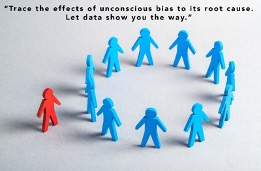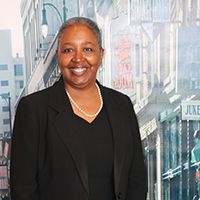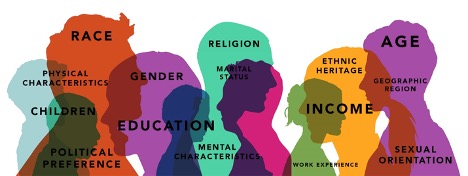By Gwendolyn J. Tucker
As an HR leader, you are faced with a daunting task… to hold your organization to the highest standards in a full spectrum of focus areas, including ethics, workplace harassment prevention, diversity, inclusion, and equity. When these high standards form the foundation of your organization’s values, you’re likely to see diverse perspectives, increased innovation, better problem-solving, reduced turnover, and improved performance.
There is one underlying challenge that impacts all of these focus areas – bias. Bias is a prejudice in favor of or against one thing, person, or group, compared with another, usually in a way that is considered to be unfair.
There are two types of bias – conscious and unconscious. Conscious biases are explicit, meaning that we are aware of our feelings and attitudes and we behave with intent. Our unconscious biases are a different story. These are social stereotypes about certain groups of people that we form outside of our conscious awareness. We all have these unconscious beliefs about various social and identity groups, and we all tend to organize our social worlds by categorizing people. That’s how unconscious biases are formed and solidify.
Unconscious bias can affect any organization or workplace. For example, processes that have been defined for a long period of time can introduce unintentional discrimination, like only interviewing candidates that are similar to current employees rather than recruiting for people with different dimensions of diversity; that is, focusing on the person rather than the qualifications. Unconscious bias can also have a significant impact on employment opportunities including recruiting, promotions, project/team selection, and more.
The effects of unconscious bias may seem small at first, usually presenting in the form of miscommunication, unresolved conflict, and grievances. But without intervention, these effects can quickly grow into lackluster performance, increased turnover, and possibly litigation.
While there is no silver bullet to completely rid your organization of unconscious bias, there are effective actions you can take to help you detect, correct, and prevent it. As a trusted advisor in matters dealing with diversity, inclusion, and equity, we partner with leading assessment experts, the Assessment Standards Institute, to determine where and what type of bias may exist in your organization and then implement a successful solution. Here’s how the process works.
- Define your mission and objectives.
It is vital to define your strategic goals and objectives when it comes to addressing the effects of unconscious bias. Bias comes in many forms and dimensions within any organization. Do you already have an idea of where bias may exist? Does your workforce and environment need a drastic change and are your employees open to discovering new ideas?
- Conduct an ASI Implicit Bias Audit.
You cannot correct what you do not measure. The Implicit Bias Audit provides insight into which bias types are most prevalent in the organization at a granular level. The most common bias types measured are age, gender, race, ethnicity, and disability but each audit is customized to your needs and organization’s demographic makeup and structure. Because it is anonymous, the ASI Implicit Bias Inventory generates insights into employee perceptions regarding the types and levels of bias within the organization.
“You cannot correct what you do not measure.”
- Formulate a strategic plan.
By letting the data show you the way, our team of diversity, inclusion, and equity practitioners will help you formulate a plan and provide you with the right tools and processes to achieve success. That plan could include anything from process reengineering, for example, to ensure you are hiring based on qualifications, or facilitated workshops, eLearning, and virtual simulations that places learners in realistic situations to use the tools and techniques they have learned.
We recognize that every organization is unique, and the strategic plan is developed to align with your specific mission and objectives.
- Implement the solution.
Coordinated with your internal team to ensure program longevity and success, the strategic plan is implemented. The key here is to coordinate with the leadership team to communicate support and direction from the top. We all know that a well-executed plan starts with a strong commitment from the organization’s leaders. We help you craft the right internal communication strategies incorporating change management best practices that promote an openness to exploring new ideas.
- Monitor your success.
Based on the mission and objectives you established, watch the organizational improvements evolve through the solution implementation and beyond. Post-implementation inventories can also be used to target other types of bias that may exist in the organization. At the end of this process, you will be reaping the benefits of holding your organization to the highest standards of diversity, inclusion, and equity.
Organizations can reach their greatest levels of success when they find the courage to acknowledge, own, and take action to address unconscious biases. We are here to help you start this journey of transformation today.

Don’t let unintentional discrimination and unconscious bias prevent your organization from reaching its potential. Your organization’s productivity and profitability are locked up within your people. At RIX International, we have the key. Start your journey today. We would love to be your guides. If you’re ready, so are we. To download the free eBook, click HERE.

Gwendolyn J. Tucker is a trusted advisor in matters related to Diversity, Inclusion and Equity. For more than 25 years, she has been actively involved in helping organizations develop and successfully implement diversity initiatives at the organizational, divisional and functional levels. She created the Diversity @ Work Series™ to drive transformational change within people and organizations.
